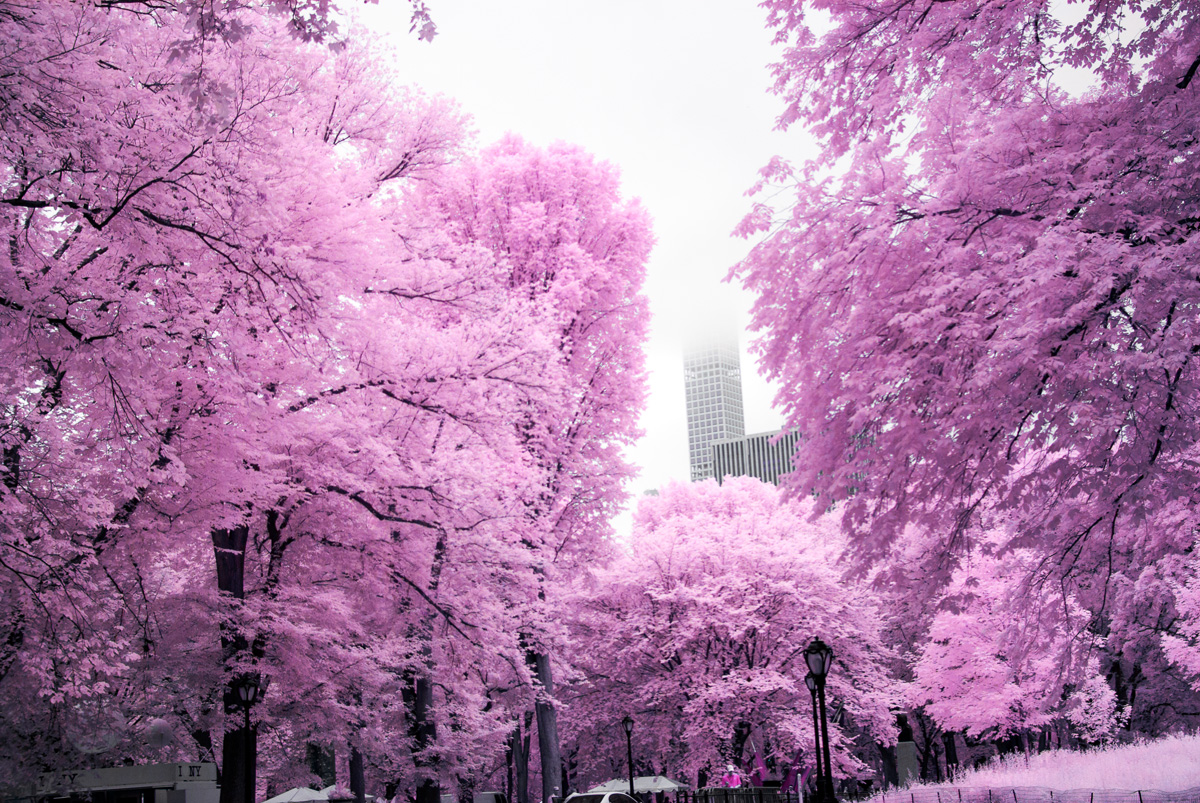No. 28. False Color Infrared Landscapes
These pictures are False Color Infrared • Central Park, New York City
There is no color in the infrared portion of the electromagnetic spectrum, but false colors appear and can be manipulated in infrared photographs based on the degree of absorption or reflectivity of infrared radiation by various objects. Green foliage reflects about 80 percent of IR. This can result in a brown, tan or pink—especially when shots are slightly underexposed to compensate for the enormous amount of IR energy reflected and diffused by healthy plants. Blues and blacks appear where IR is absorbed such as in sky or water. A specially modified camera is necessary to capture in the infrared spectrum. Advanced post-production skills are also required to develop IR photos.










